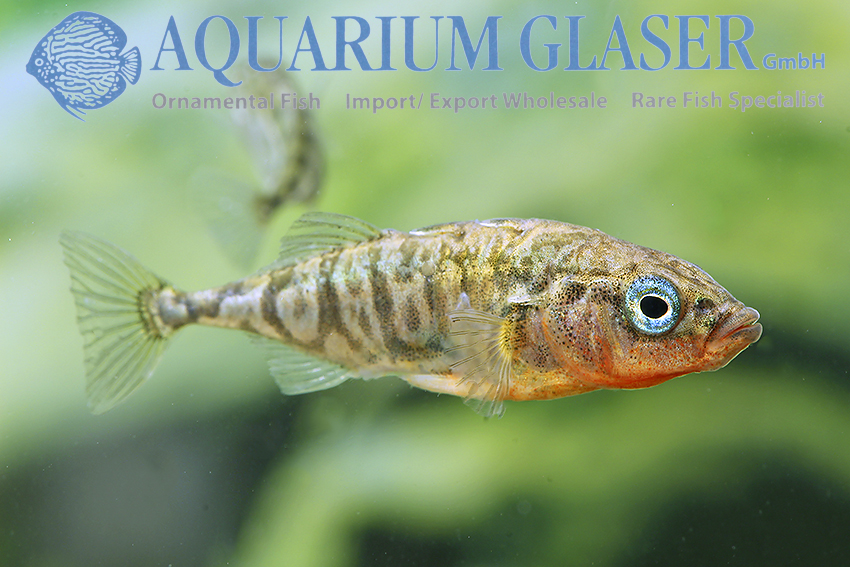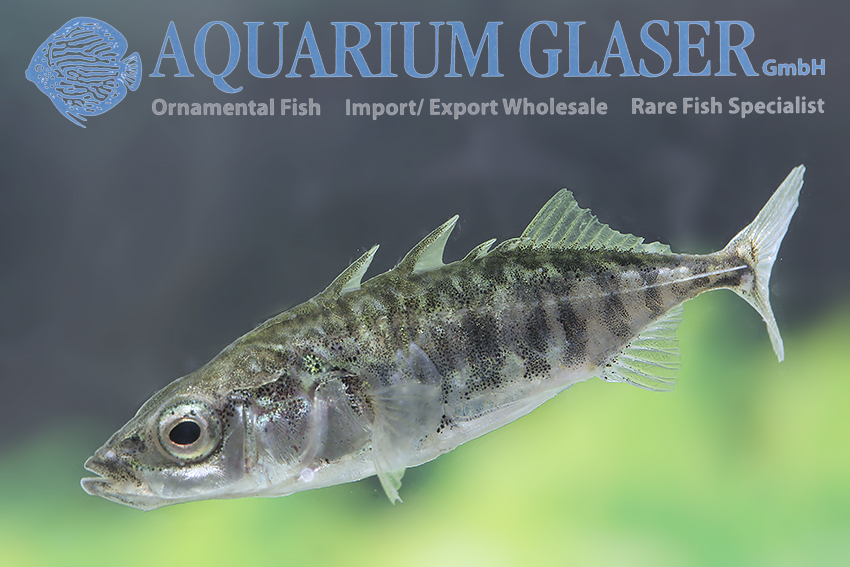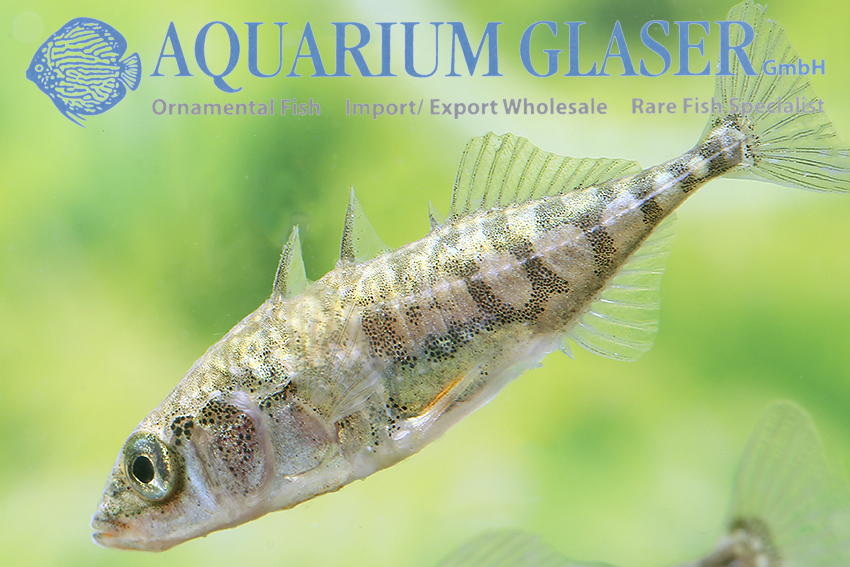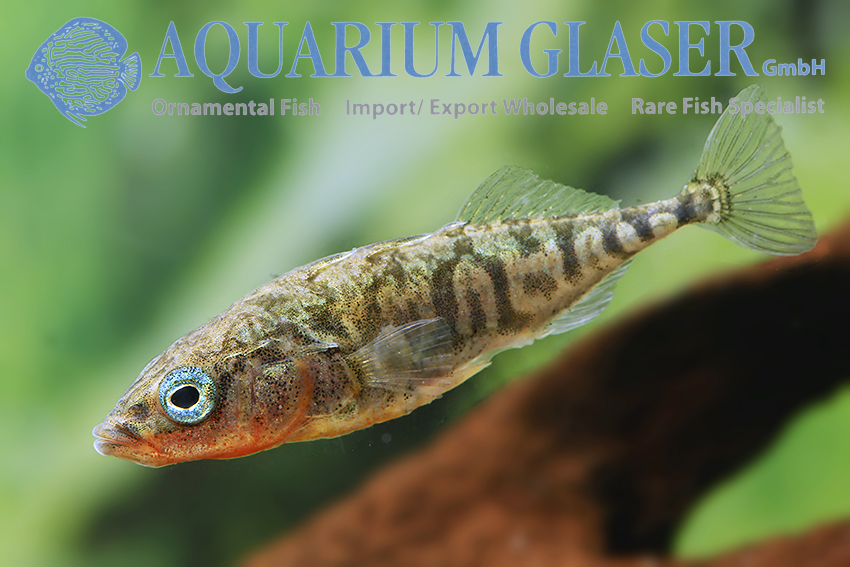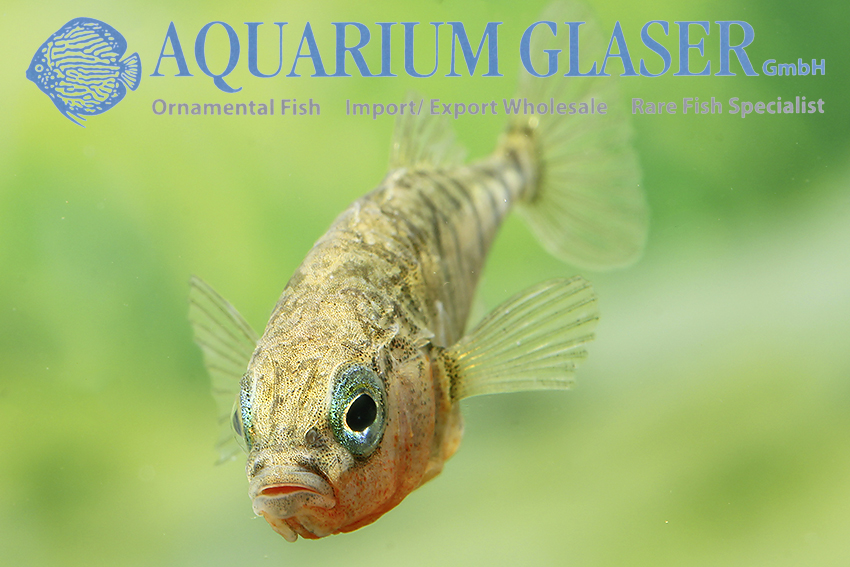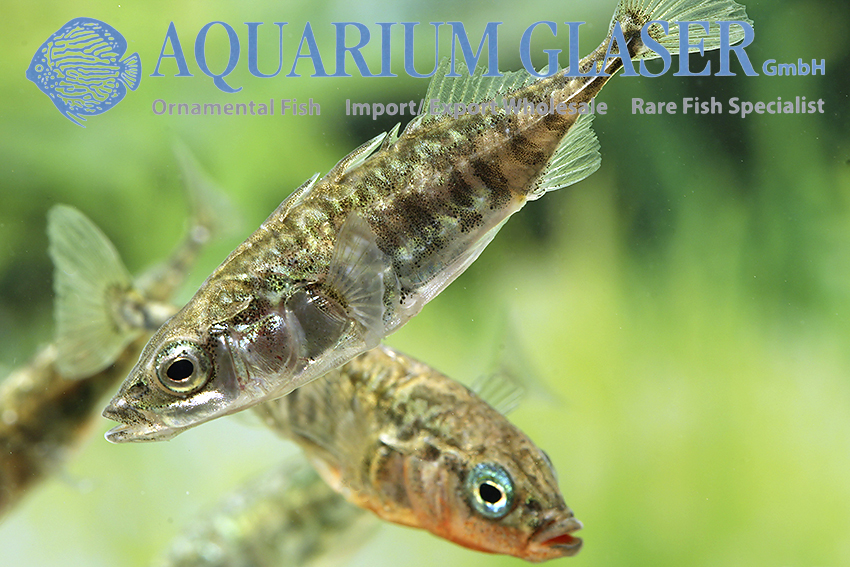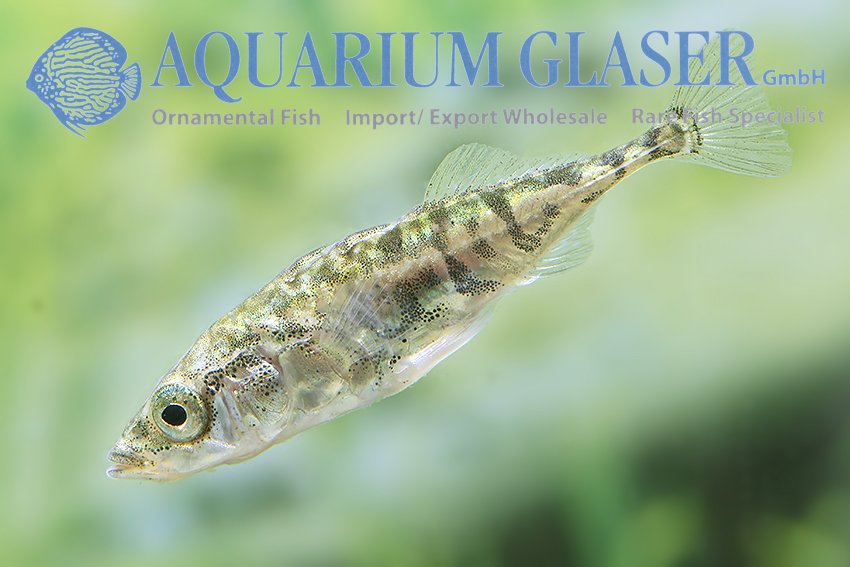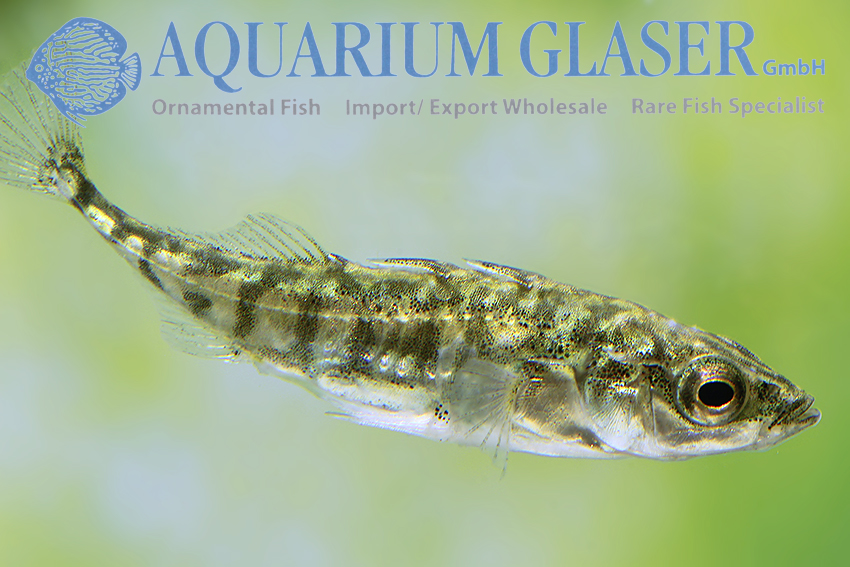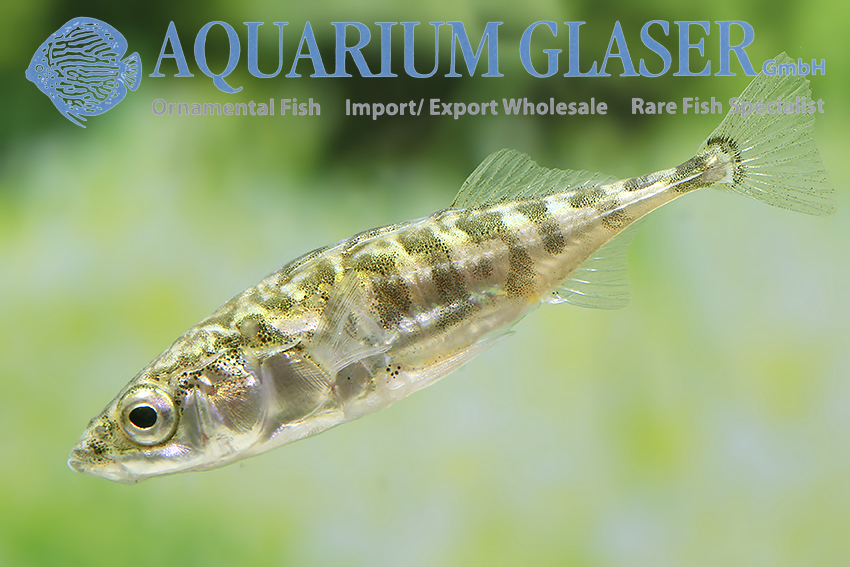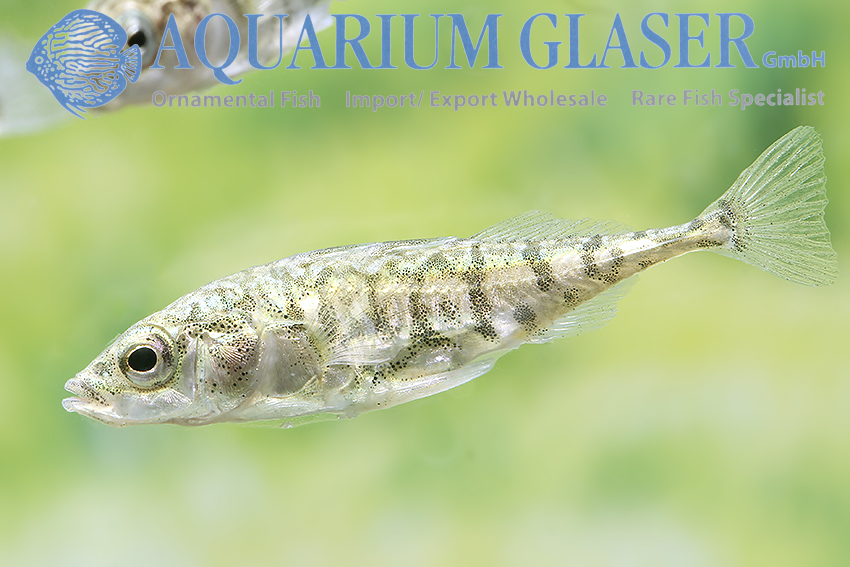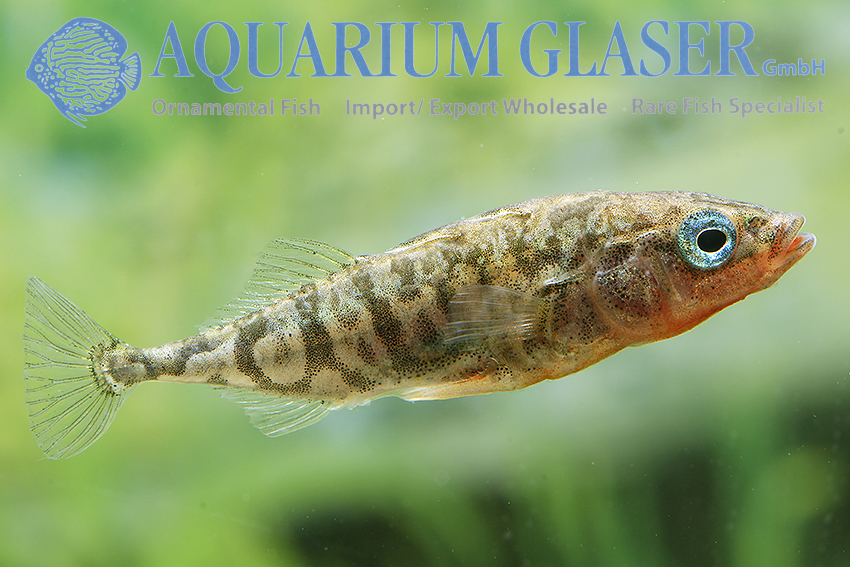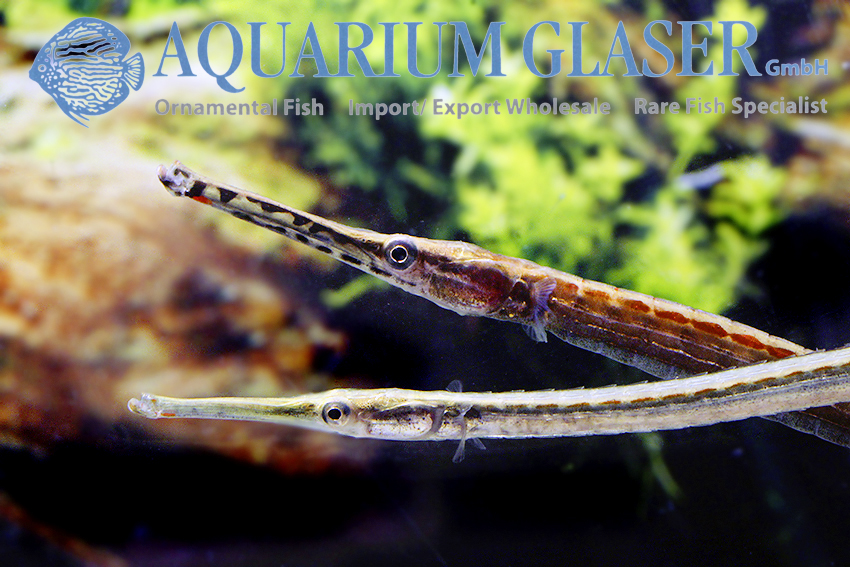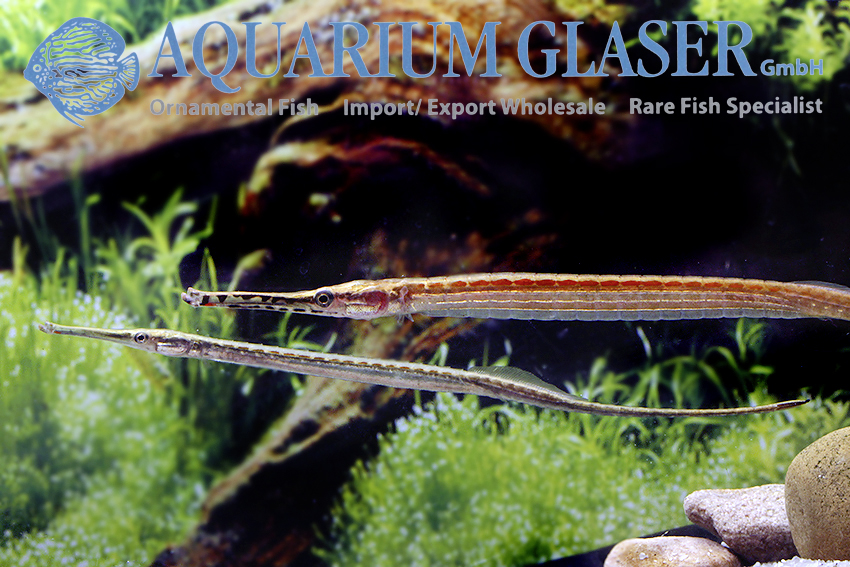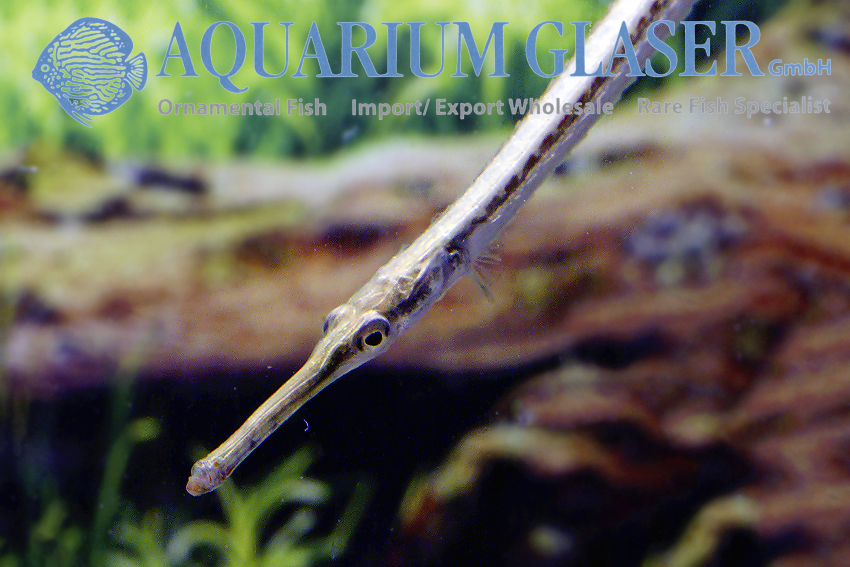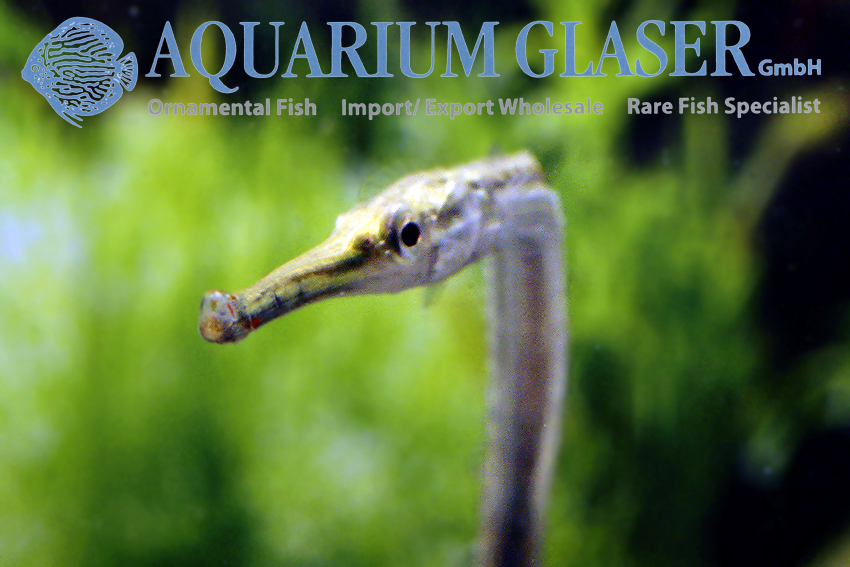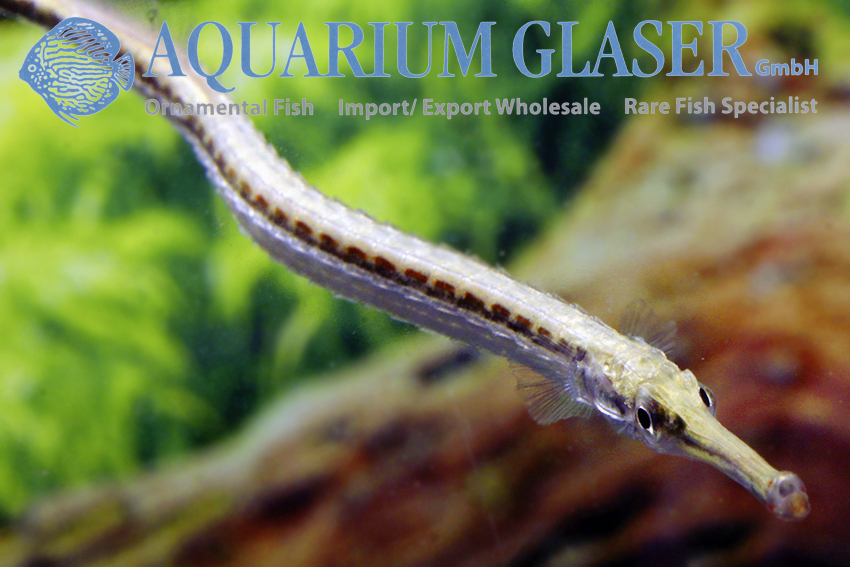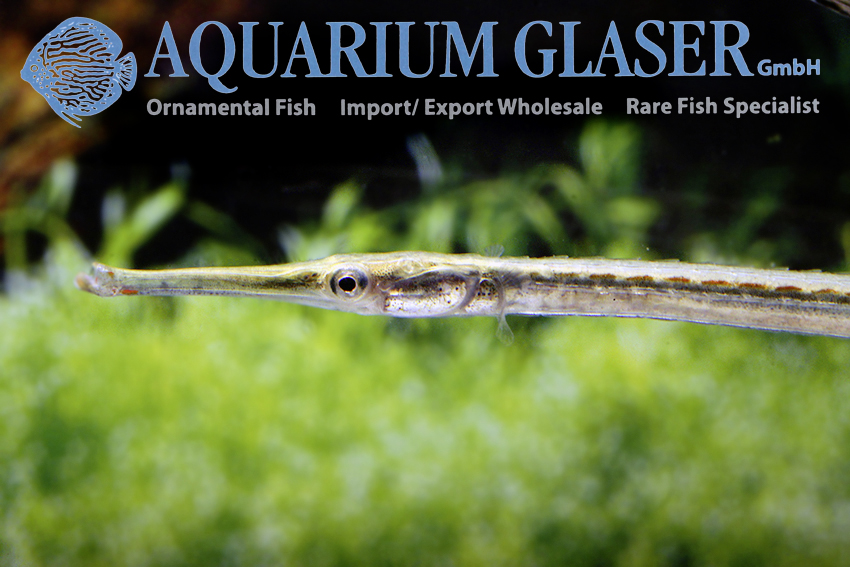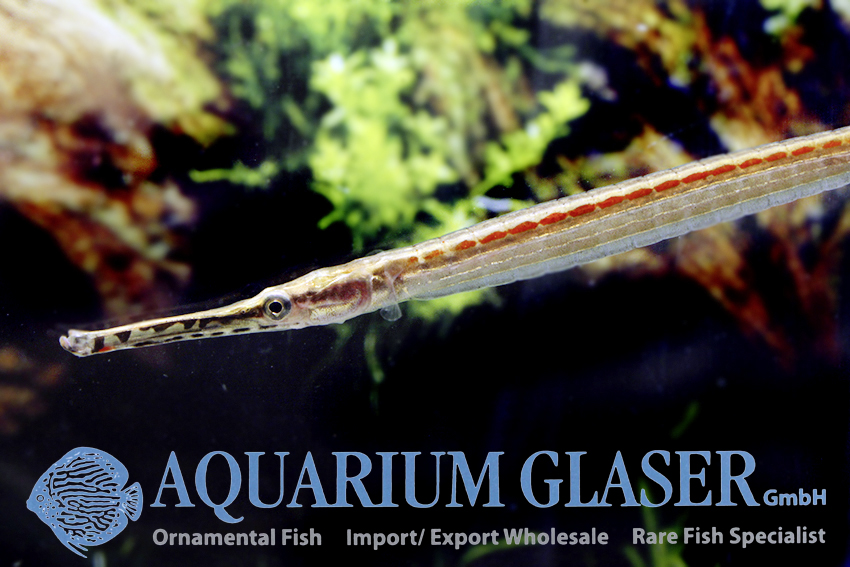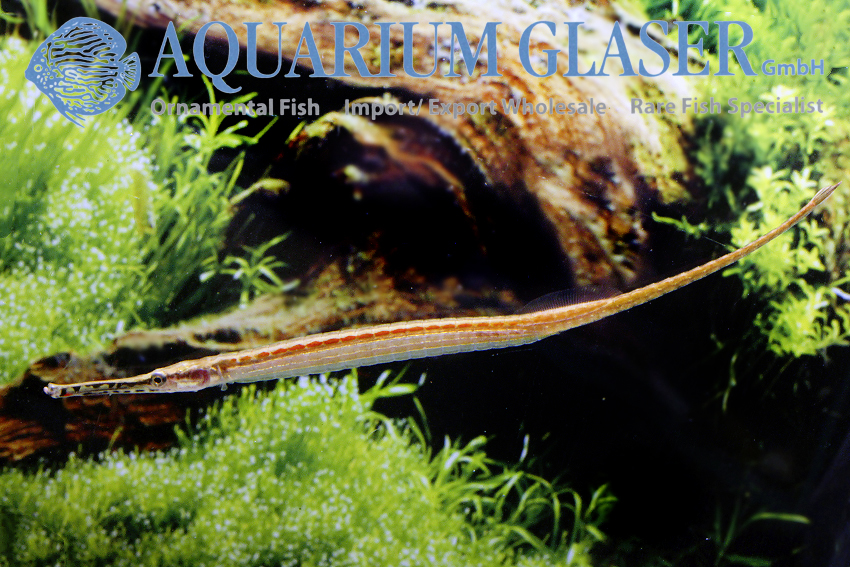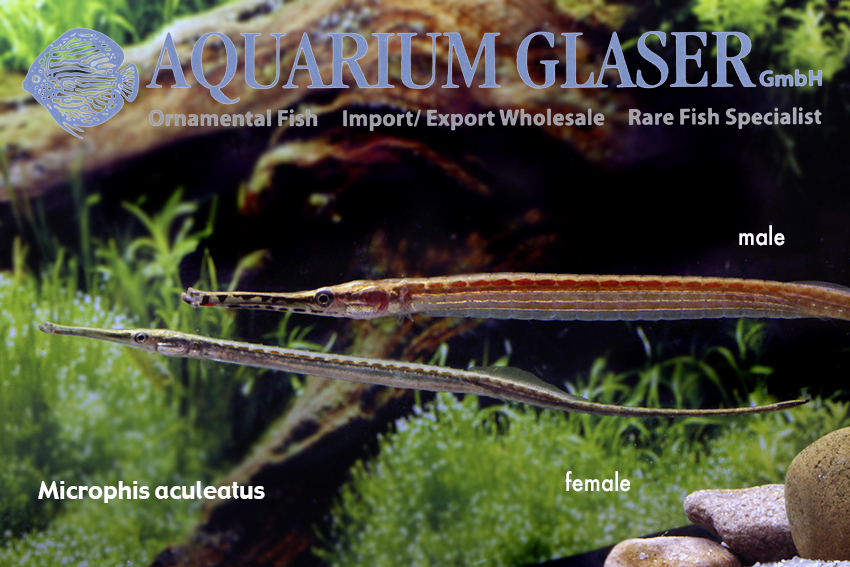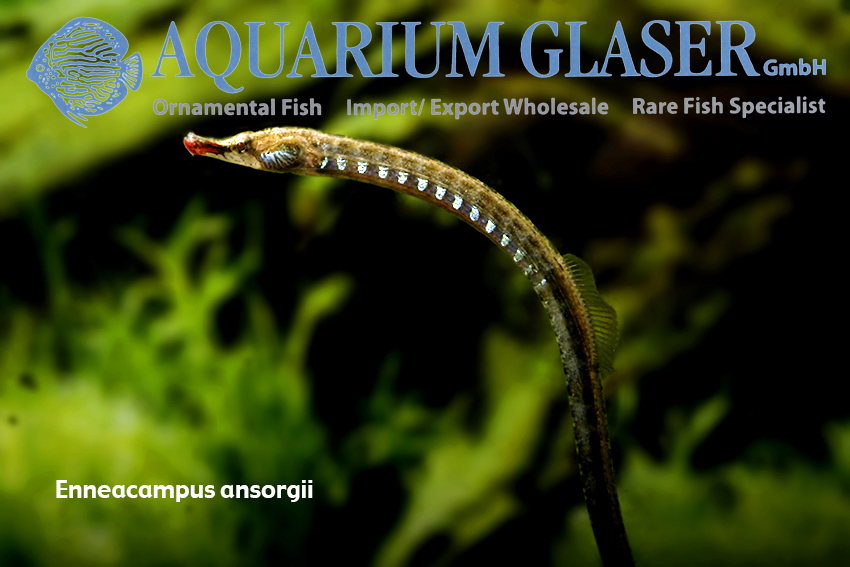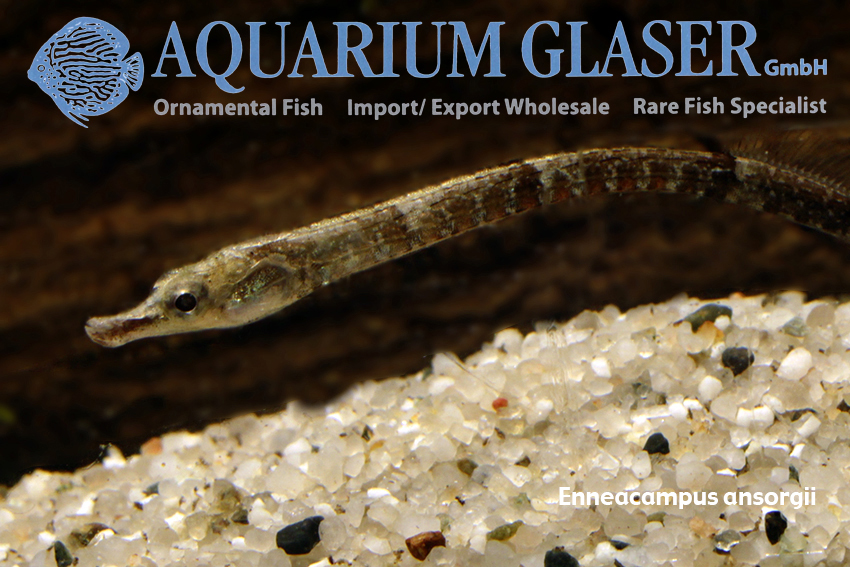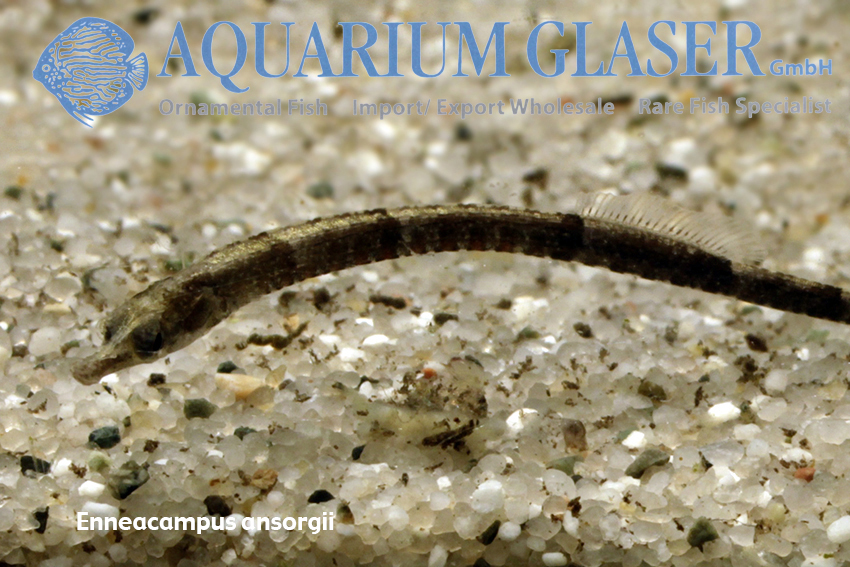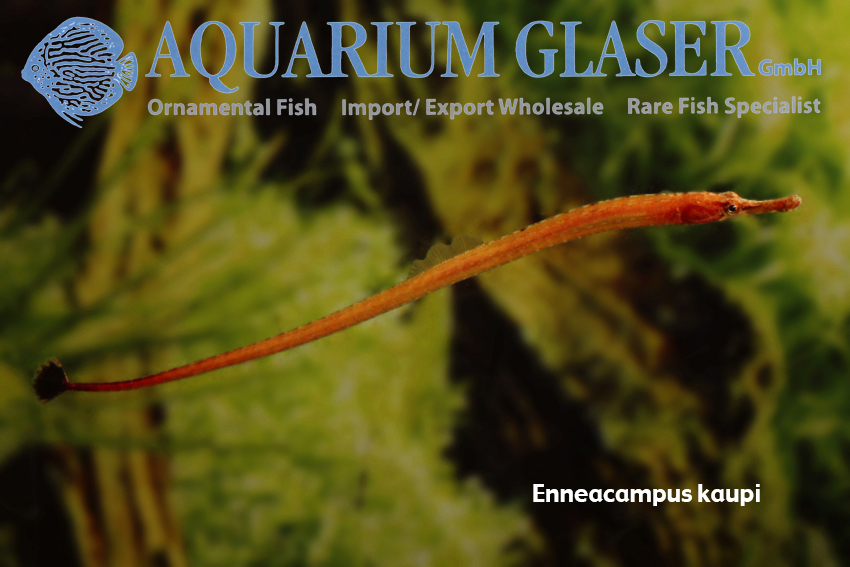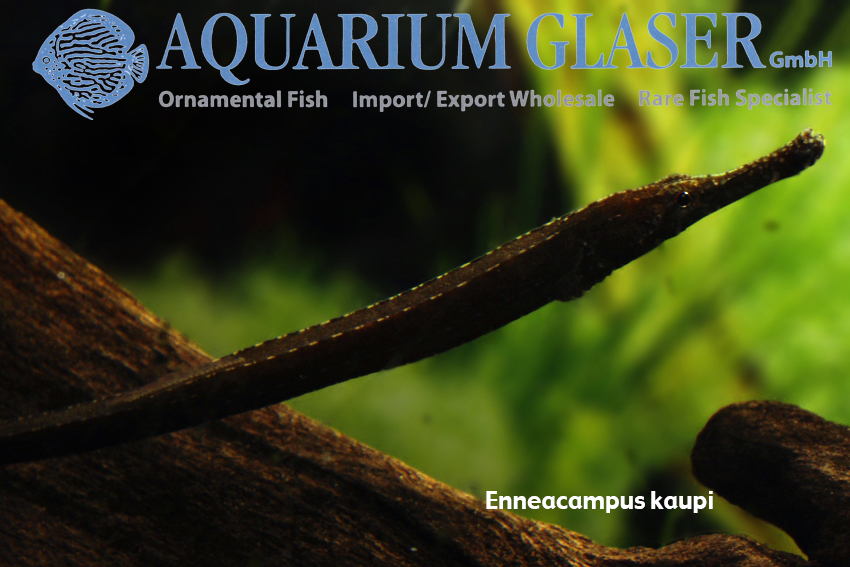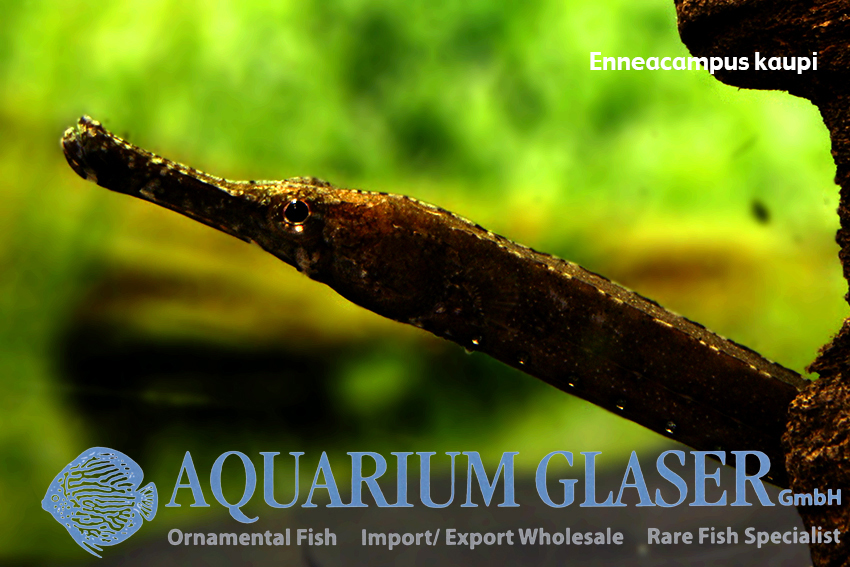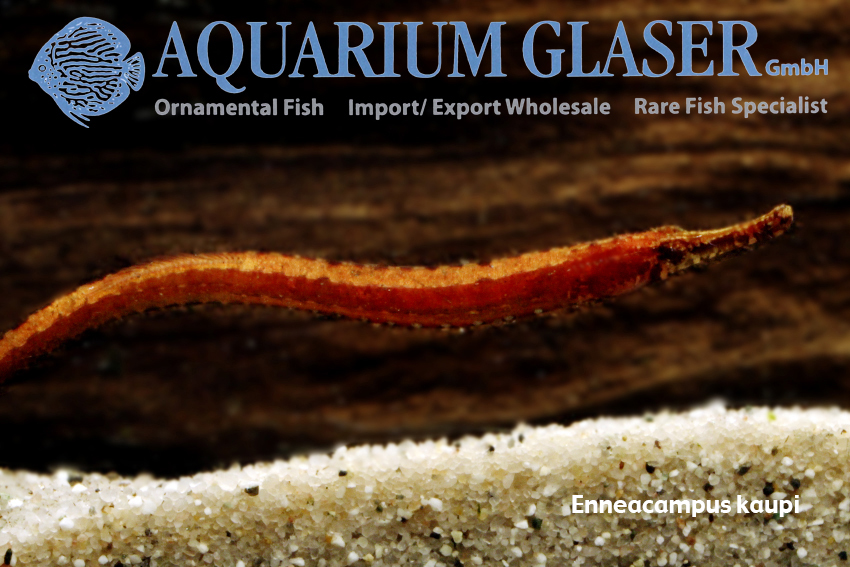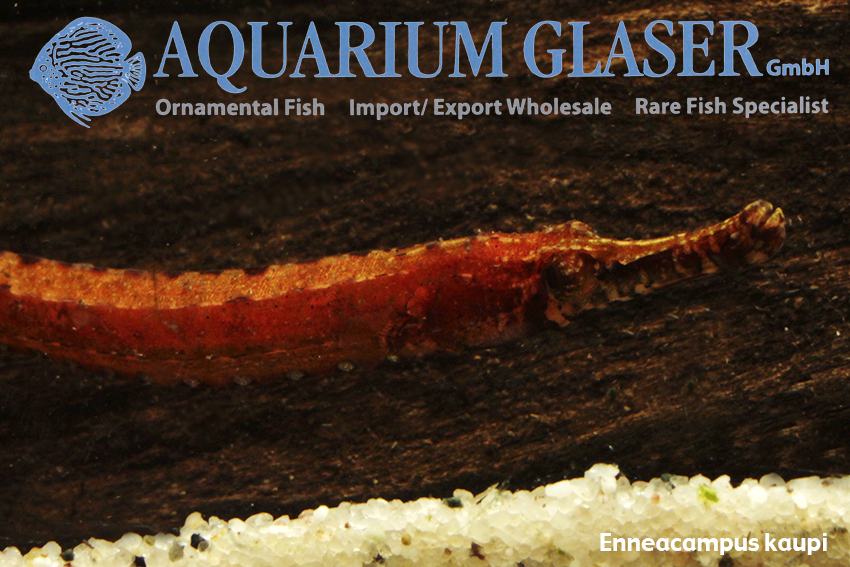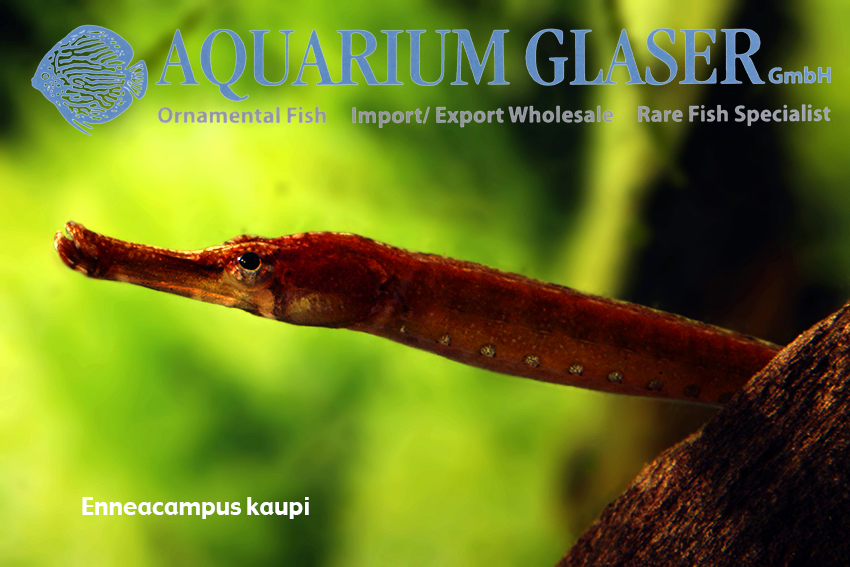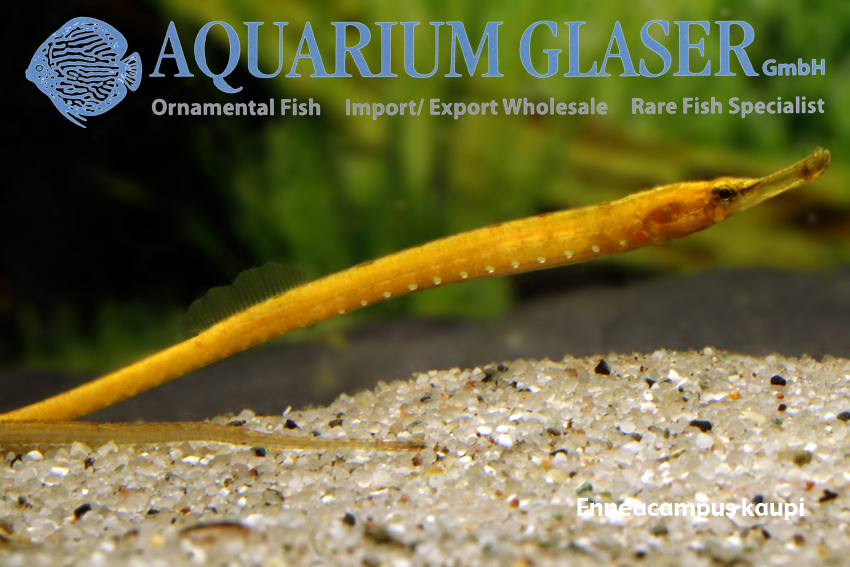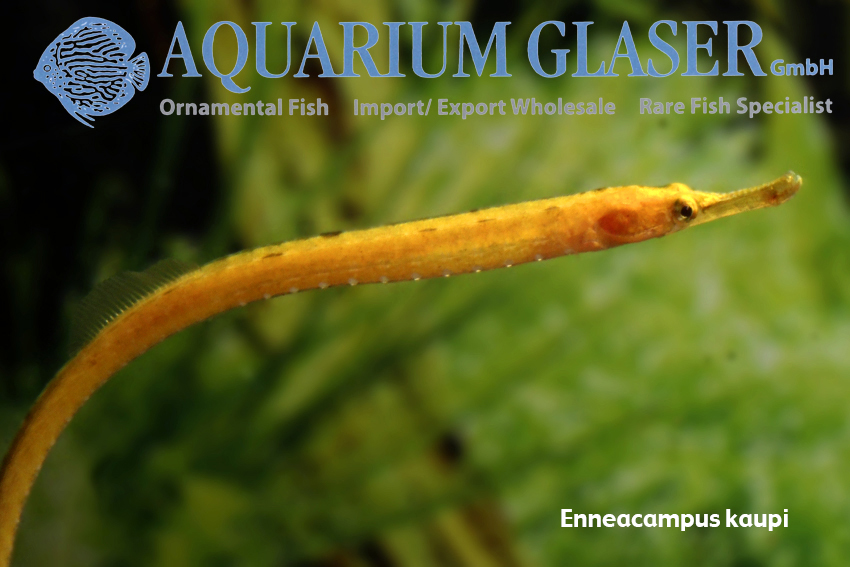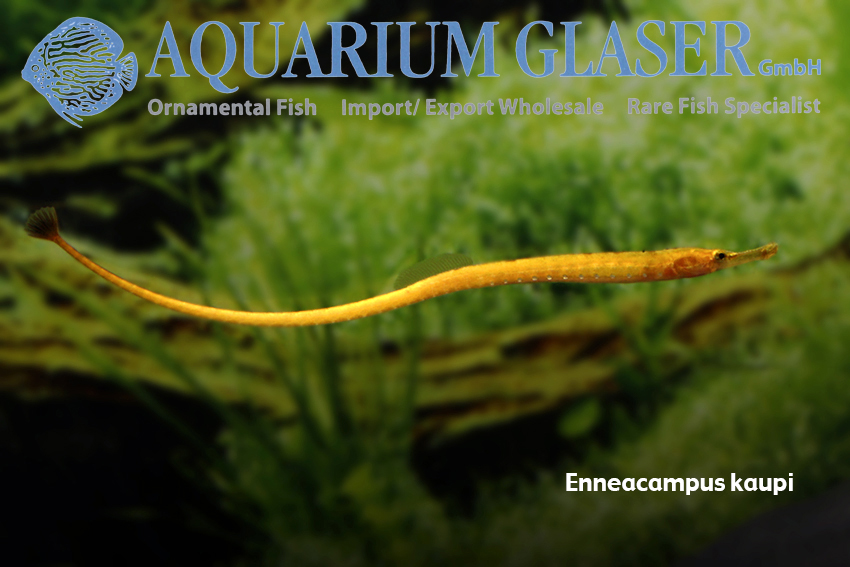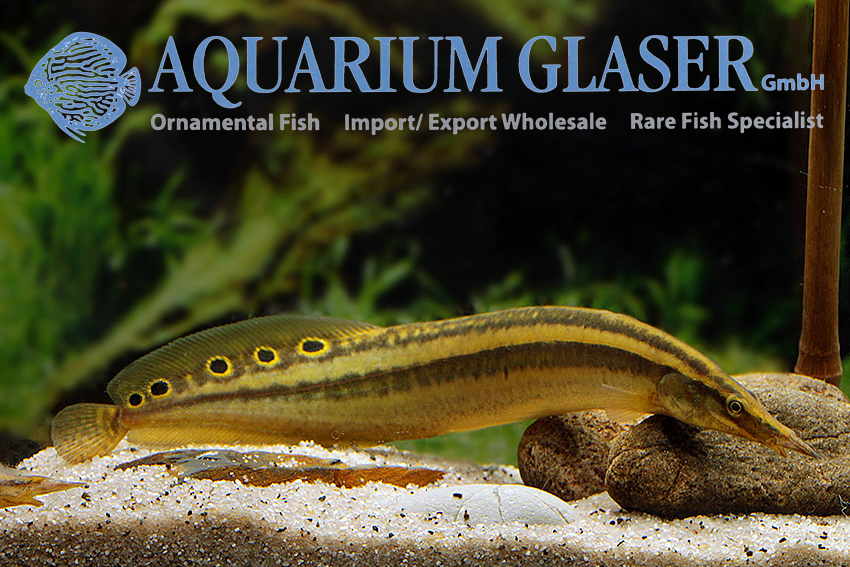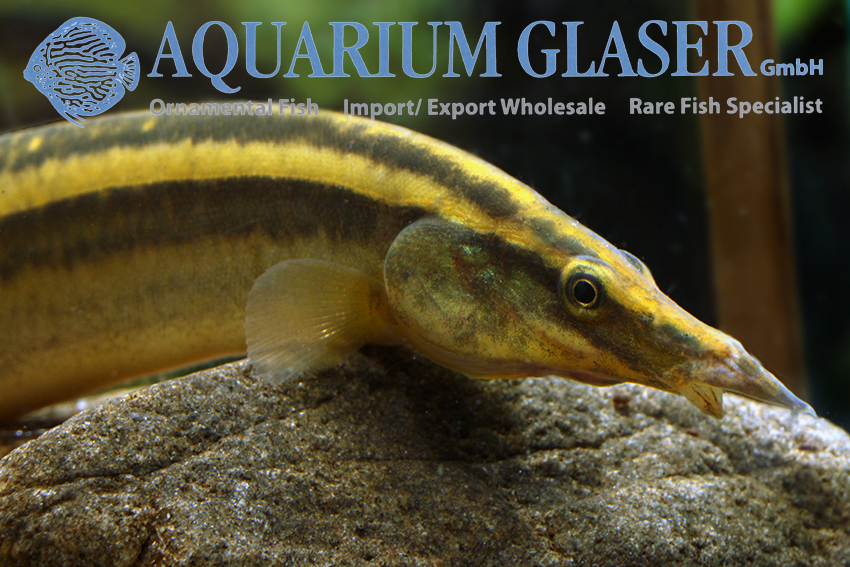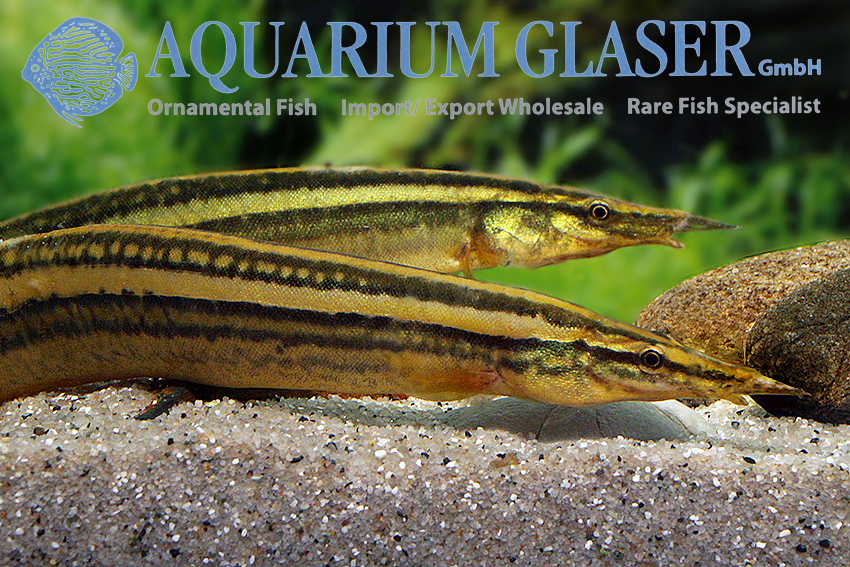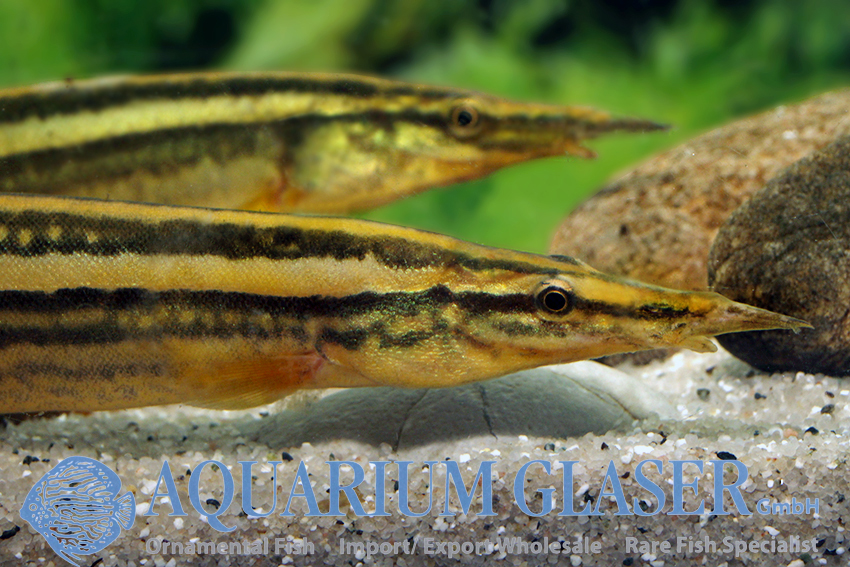There are three species of freshwater pipefish known to occur in West Africa. They live in inland waters along the coast and have a very wide distribution. One can find these fishes from the Senegal to Angola (roughly 16°N to 18°S). The term „West Africa“ is not used here in the sense of the UN, but is meant as the whole coastal line of the continent. We obtain our freshwater pipefish from Nigeria.
From time to time we can import the largest of the three species, namely Microphis aculeatus. This pipefish becomes about 15-20 cm long. Microphis live free swimming in the water column and imitate a dead stick. Usually one can observe them in a horizontal posture. More information on the very interesting species can be found here: http://www.aquariumglaser.de/en/fish-archives/gorgeous_pipefish_arrived_from_nigeria__en/
In our current import of that species we found intermixed some bycatches of the two other known species of pipefish from West Africa. Both belong to the genus Enneacampus. This genus has been established only in 1981 and contains only these two species. In contrast to Microphis Enneacampus live more substrate orientated. Although they swim around from time to time they prefer to rest on the bottom or to crawl in caves or waterplants. The first species is Enneacampus ansorgii, a species that is already known quite well in the hobby. It is even bred from time to time. This species is quite tiny and attains a total length of about 8-14 cm. Males have been found to bear eggs with a length of 7.5 cm already. There is a comparatively large number of publications in the aquarium literature, but most of it has been written prior to 1981 under the synonym of Syngnathus pulchellus. So if one does research on the species in literature the search should include the name Syngnathus pulchellus.
We find the coloration of the second species, Enneacampus kaupi, quite spectacular. Five specimens we could pick from our Micophis import, one is bright yellow, three are brick red and one almost black. We think the these colours are due to the breeding season, because in the scientific literature E. kaupi is described as rather brown with a red belly. This species is somewhat larger than E. ansorgii, sexual activity starts at a length of 8.5-9 cm, while the largest specimen observed so far had a length of 17 cm. Both species of Enneacampus look very similar at the first glimpse, but on a closer look one can clearly see that E. kaupi has a comparatively longer snout.
Regarding keeping pipefish in aquaria: all species are quite demanding fish in respect of feeding. Without a a save source for living food it can not be recommended to try to keep them. Microphis aculeatus and Enneacampus kaupi feed readily on life bloodworm and white moskito larvae. The tiny M. ansorgii cannot swallow such large food items, they prefer small crustaceans, like Cyclops, Daphnia etc. They also accept Artemia nauplii (best: newly hatched, due to the nutrition factor). If one has to feed the pipefish regularly with brine shrimp it is best to add some salt to the water in the aquarium (a tablespoon per 10 litres of waters). This is tolerated by the pipefish and the brineshrimp stay much longer alive.
For our customers: Micophis aculeatus has code 149204 on our stocklist. The few specimens of Enneacampus have been given to a breeder, so we have none for sale. Please note that we exclusively supply the wholesale trade.
Text & Photos: Frank Schäfer





